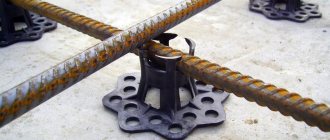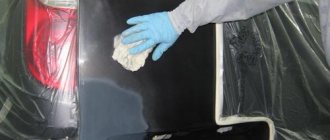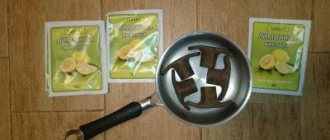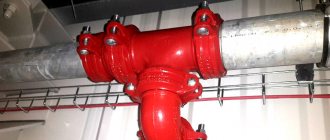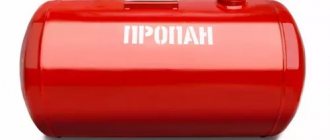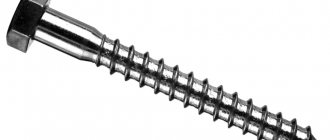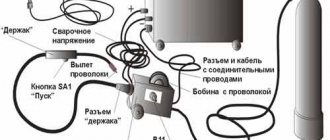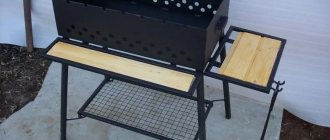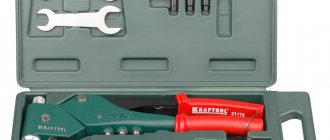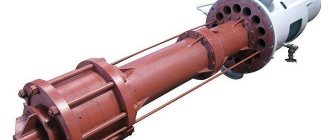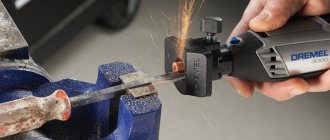Anyone, even a novice metalworking specialist, knows that when performing turning work on a machine, it is necessary to use cutting fluids (coolants). The use of such technical fluids (their composition may vary) allows you to solve several important problems simultaneously:
Application of coolant during turning
- cooling of the cutter, which is actively heating up during processing (accordingly, extending its service life);
- improving the surface finish of the workpiece;
- increasing the productivity of the metal cutting process.
What is coolant?
Cutting fluid is a specially developed composition used when working with metals. During technological processes on lathes, friction occurs, which most often leads to deformation of the workpiece or a change in the properties of the material used.
In addition, expensive equipment or its parts may fail.
The main task of coolant in the metalworking process is to separate surfaces that are subject to friction and also to reduce the temperature of the tool.
The content of various additives in a chemical product helps to increase productivity, simplify work processes and improve the quality of products.
Soluble oils
It is the most popular type of coolant and is used in light to heavy duty applications involving both non-ferrous and ferrous metals. It contains a mixture of water and oil that combines the lubricity of cutting oils with the cooling power and economy of water.
Benefits include good lubrication, improved cooling ability and good rust protection. It also resists mixing with grease and guide oils.
Disadvantages include increased maintenance costs, susceptibility to rust, bacterial growth, oil contamination and evaporation losses.
Types of coolant used in turning
Cooling lubricants, while performing the same functions, differ in composition and performance parameters.
Oily
The base is mineral oil, and the composition can be supplemented with various functional additives that perform anti-friction, extreme pressure, anti-corrosion, and anti-fog functions.
Oil lubricants and cooling agents are actively used during cutting, as well as during work on automatic machines.
Liquids are colorless—their transparency does not block the view of the workpiece during grinding or turning. Although they have excellent lubricating characteristics, they have some disadvantages: lack of cooling and a high level of flammability.
Synthetic
The product contains components that help weaken the surface tension of the liquid and also increase the effectiveness of the lubricant.
The composition includes water-soluble polymers, corrosion inhibitors, surfactants, antifoam additives, biocides and water. To increase the effectiveness of lubricity, extreme pressure and anti-wear additives are introduced.
The liquid is used when working with stainless steel, cast iron, plastic and various polymers. The product is resistant to bacterial contamination, which ensures sanitary and environmental safety, as well as a long service life.
Semi-synthetic
Semi-synthetic cooling lubricants contain mineral oil as a base. Liquids have high anti-corrosion parameters and lubricating properties.
Coolants are resistant to bacterial attack and also contain extreme pressure additives and wear protection.
The composition of the components of semi-synthetic liquids is practically no different from emulsols. The only difference is the level of concentration of the elements. The basis of semi-synthetic substances is water - up to 50% and emulsifiers - up to 40%.
An important component is petroleum oil, which has a low viscosity.
Water based
Designed to protect equipment, increase machine service life, and process productivity. Aqueous solutions contain mineral oils, biocides, corrosion inhibitors and other components, with the exception of nitrates, secondary amines, heavy metal compounds and chlorine.
The substances are produced in the form of a concentrate, which is diluted with water. As a rule, the cutting fluid is poured into clean water. It is not recommended to carry out the process in a different sequence, adding concentrate to water.
The proportion of substance and water depends on the type of operation performed and the material being processed. The lowest concentration is 2% and is used for grinding metal products. To work with high-alloy steels, at least 10% of the product is required.
Semi-synthetics
This coolant has a synthetic base, but also contains oil (5 to 30%) and water. A “hybrid” of both soluble and synthetic fluids, it can be used in a wide range of applications and is suitable, for example, for machining large cross-sections of cast iron.
Advantages include versatility, good microbiological control, corrosion control, cooling and lubrication. There are other benefits too, these include ease of maintenance and long service life. On the other hand, water hardness can affect stability and cause foaming.
How to prepare cutting fluid with your own hands?
To make your own emulsion you will need the following ingredients:
- liquid soap;
- soda ash;
- kerosene;
- sunflower oil;
- bleach;
- warm water;
- dishwashing detergent;
- container for cooking and mixing;
- electric stove.
Liquid soap is combined with sunflower oil, kerosene and soda. All ingredients are taken in equal proportions and mixed in a container with a volume of at least 10 liters. Add a little bleach and dishwashing liquid to the resulting solution.
Then the entire mixture is poured with warm water until the container is full. On an electric stove, the liquid is heated to a temperature of 90°C, stirring continuously.
The result is a concentrated mixture, which is subsequently diluted with water in a ratio of 1:3.
Belt cooling methods
The most effective method of using coolant for the operation - high-performance cutting of metal on a band saw machine - is a coolant supply system flowing from above through guide tubes on the side where the band blade enters the workpiece being cut and on the side where the band blade leaves it. Using this coolant method effectively reduces frictional heat and provides maximum lubrication as the blade passes through the guides over the workpiece being cut. This ensures that coolant is effectively supplied to the cutting zone. For small bandsaws that are not equipped with a coolant tank, a small and relatively inexpensive oil mist system can pay for itself in a short period of time. The design of the belt blade often results in high coolant loss when using the guide tube coolant method. The angle of supply of the guide tube and the small thickness of the channel can only cover a blade of small cross-section, thus, little heat is removed from the cutting zone. Consequently, an oil mist system is usually more effective in providing reduction of frictional heat from the belt. It is also very important that both sides of the tape should be lubricated evenly. If one side of the belt is not sufficiently lubricated, the belt will usually pull toward the more lubricated side.
Rules of application
To effectively use coolant, it is recommended to follow some rules:
- It is recommended to select a flow rate of at least 10-15 l/min;
- the liquid is directed to the area with maximum heat generation;
- coolant supply begins from the moment turning begins, otherwise sudden cooling of an overheated tool will lead to the formation of cracks;
- when working with difficult-to-cut material, the liquid is supplied in a thin stream from the back side of the cutter;
- lubricants used for equipment must be compatible with coolant;
- before carrying out work on the machine, the liquid concentration is monitored;
- the coolant concentrate is stored indoors with good ventilation at a temperature of 50 to 400 ° C; the substance must not be frozen and containers with galvanic coating inside must not be used.
Coolant is not used for working with brittle materials that produce small chips in order to avoid premature wear of the machines.
Cutting fluids have a positive effect on process performance, as well as protection of turning equipment and products from overheating and deformation.
Each type of coolant has certain parameters and characteristics that must be taken into account when used.
Characteristics of Band Saw Machine
Some bandsaws are equipped with a coolant system that sucks and drains the coolant back into the coolant tank. As a general rule, a non-coolant bandsaw should only be used for cutting easy-to-cut materials such as mild steel and aluminum. An oil mist system can also be installed on a vertical or horizontal band saw to provide lubrication to reduce frictional heat. However, the fogging system does not provide evaporative cooling of the blade or workpiece, therefore, the cutting speed must be reduced by 15%-20%. Dry parting without coolant requires half the normally recommended cutting speed.
Spindle cooling system as a tool to compensate for thermal deformation of the machine
Using Spindle Cooling Temperature as a Tool to Compensate for Machine Thermal Deformation
Compensating for machine tool temperature errors is a relatively difficult task nowadays. Machine tool users have very high expectations regarding the quality of their products, so every means must be used to improve the machining accuracy of existing machines. This article discusses a new approach that combines standard machine tool temperature measurement with a new spindle coolant temperature measurement. Then, using the polynomial regression equation, we will calculate the compensatory correction of the tool position. This calculation does not overload the machine's control system, so no additional external hardware or computers are required. The supply of coolant improves the accuracy of machine tools during long hours of operation.
Key words: machine tool building, temperature compensation.
- Introduction
From the point of view of temperature measurement, machines can be divided into two groups. The first group consists of so-called intelligent machines, in which all the necessary sensors are implanted directly into the machine at the production stage. A machine spindle with built-in temperature sensors for bearings, motor windings, etc. is a typical representative of this group. Such machines can solve deformation problems using mechatronic methods. Unfortunately, these machines are not yet very common. They are also relatively expensive to produce. The second group includes conventional machines that have a limited number of built-in sensors (about five). These sensors are specially installed on the machine frame. The spindles are usually not controlled. Machines of this type are the most common today.
Conventional machines can be retrofitted with additional sensors. However, sensor placement can be extremely problematic. Problems may include:
- The sensor cannot be placed directly into a heat source;
- The sensor cannot be installed as required due to the structure of the machine or the equipment placed on it;
- The sensor is too large to fit into the selected measurement location;
- The sensor cannot be buried in metal;
- The contact surface between the sensor and the housing is insufficient.
An example of sensor installation is shown in Fig. 1.
These thermal analysis problems are clearly visible in the spindle. As mentioned, it is not possible to disassemble the spindle to do this. In addition, the spindle is not designed to accommodate additional elements, due to its very complex internal design. Currently, the most widely used option is to place the necessary sensors on a rotating spindle head, as close as the spindle can allow. Another option is to place the sensors on the spindle cooling jacket.
From the point of view of heat generation in the machine tool, the spindle is the main source of heat, and its thermal deformation is the main reason for the overall deformation of the machine tool. This effect is multiplied when an electrospindle with integrated windings is used. The increased deformation of this type of spindle is caused by the typical mechanical layout of the front and rear bearing groups and the electric motor windings.
These three parts of the spindle constitute the main source of heat, but heat is also transferred to other parts of the spindle (lubrication and cooling circuits, spindle mounting sleeve, etc.). If the sensors are located on the outer surface of the spindle mounting sleeve, there is a relatively large time delay in the transfer of heat output from the heat source to the temperature sensors. This delay can cancel the temperature compensation of the machine deformation. The sensors do not respond when the spindle (as well as the machine frame) is already deformed by heat. Cutting accuracy is lower than expected. Efforts to eliminate this negative effect are the main problem for engineers and machine tool workers. A new approach to the problem is to use spindle coolant as a carrier of information about the thermal state inside the spindle
Rice. 1: Example of a sensor mounted on a spindle
Rice. 2: Spindle cooling circuits
- Using spindle coolant.
Our goal is to find a way to obtain information about the internal thermal behavior of the spindle by measuring the temperature outside the spindle. The only option is to use spindle coolant. This fluid flows around the bearing groups and around the electric motor winding (Fig. 2.). This removes the generated heat from the spindle components. If a temperature sensor is placed in the fluid in the cooling jacket at the exit of the spindle, it can sense conditions inside the spindle. The advantage of this measurement is the speed at which the fluid transfers temperature information from the bearings to the sensor. This heat transfer time is shorter than the time it takes for heat to pass through the mass of material, from the bearings to the outer surface of the spindle, where the sensors are typically located. Our experiments prove that the sensor responds to temperature changes much faster (in the case of liquid cooling of the spindle) than other sensors installed on the machine frame.
The results are shown below below.
- Monitoring the temperature behavior of the machine
Experiments aimed at testing our hypothesis were performed on a 3-axis machining center equipped with a DMU spindle motor and linear motors in all three axes. This machine has a Type C layout, with the most common type of frame. The goal of our project is to eliminate the thermal deformation of the vertical Z axis caused by the spindle. In general, the deformation of the machine was controlled at the location of the tool in the Z-axis direction. The machine was heated repeatedly by rotating the spindle. The analysis started from a cold state, after which the machine was turned off 48 hours before the experiment. Thus, the machine was brought to room temperature.
The machine was then started and the spindle was driven at a constant rotation speed of 7500 rpm (50% Nmax).
Rice. 3: Temperature behavior of MCFV 5050LN
Rice. 3. shows that the test was carried out for approximately 10 hours. This is enough to show the direction of flow and the amount of heat flowing from the spindle to the machine frame. The deformations of this type of thermal load in the Z direction are shown in Fig. 4. The initial very fast heating phase is caused by the spindle itself. The middle phase, between “50 min” and “150 min”, is a mixture of the influences of the spindle and machine column deformation. At the last stage, from “150 minutes”, deformation is created only on the column.
Another problem in implementing a compensation mechanism for a machine tool is its cost.
Rice. 4: Z-axis deformation due to spindle heating
It is necessary to offer solutions that are inexpensive but function well. The standard solution is multidisciplinary regression analysis. Even without additional equipment, the machine control system will not be overloaded.
- Multicompensation regression
Multicompensation regression is based on the principle of calculating results from several inputs. This can be written as an equation:
For a better overview of the complete thermal behavior of the machine, a variety of sensors are installed on the machine frame and on the spindle. Sensors are selected for comparative analysis using two parameters:
The first parameter is the relationship between the increase in deformation and the increase in temperature at a certain location. The second parameter is the speed of reaction to temperature changes in the measured location. The reaction limit for this experiment was set to 0.5 degrees. Four sensors were selected. 2 sensors are installed on the spindle, one on the Z-axis column and on the Z-axis linear motor. The sensors are shown in Table 1 and their placement is indicated in Fig. 5. The temperature data to calculate the correct compensation (Equation 1) is fed into the machine control system. The result of the calculation according to formula 1, calculated at a given moment in the cycle time, represents a correction signal for the machine control system. Instead of the time deformation characteristic, the temperature deformation characteristic is used for multinomial compensation. The heating process can vary over time, but from a physical point of view, the temperature change is dominant for the magnitude of the deformation.
Table 1: Sensors and response times
Rice. 5: Selected sensor placement
Rice. 6: First thermal strain measurement
As a result of the deformation, the equation for the Z-axis from the calculations of the four sensors is as follows:
This equation was derived by calculating the temperature change and deformation during the first temperature analysis of the machine tool (Fig. 6). The calculation was checked in the next measurement, with different initial conditions. The machine was in different initial thermal states, with different room temperatures. In addition, the machine frame was in a semi-warm state, due to incomplete cooling compared to the previous working day. The cooling process only took place at night, which was not long enough for this type of machine. The spindle generated the same thermal load as in the first analysis.
- Compensation Results
The residual deformation after compensation is shown in Fig. 7. It is obvious that the compensation applied has a positive impact. The improvement can be seen in the middle transition phase, where the effects of spindle deformation and column deformation are opposite. This always makes it difficult to describe this phase, since the superposition of two deformations influences it significantly. In addition, during the first stage, when large spindle deformations occur, we can see good performance of the compensation mechanism.
There is a very rapid increase in spindle deformation. Multinomial compensation with spindle coolant temperature measurement eliminates this effect in a shorter time than without compensation.
The principle of calculating polynomial regression, together with a small number of installed sensors, limits the speed of reaction to unexpected changes in the behavior of the machine. This effect can be seen in Fig. 6. in time about “470 min.” Sudden failure of the spindle cooling system causes deformation. The compensation mechanism comes into play, but not to a sufficient extent. This is due to the sensors that are included in the compensation calculation. To improve this type of compensation, a special multinomial approach is needed for the spindle.
Rice. 7: permanent deformation after compensation
- Conclusion
The use of liquid cooling of the DMG spindle improves the multinomial regression of the compensation mechanism. The obtained residual deformation of the MCFV 5050LN universal machining center, in the Z axis, is better than that of standard regression. The calculation was made using only measurements of the machine frame. Deformations can be eliminated faster in the critical first phase, since these calculations are obtained from four sensors: machine body, spindle and coolant. The compensation response is not fast enough for unexpected events when there is no cooling.
Cooling the laser tube. Water or Antifreeze
After installing the machine, the question arises: what would be the best way to cool the laser tube?
The most popular methods:
- Regular tap water
- Distilled water
- Antifreeze
- Antifreeze + Distilled water
Plain water
Basically, ordinary water is used by those who have a bucket and a pump.
It has its advantages:
- When the water in the bucket heats up quickly, you can simply and quickly change it or add a piece of ice.
- Always at hand. Can be poured from any tap.
- regular water has too many impurities (salts)
- “blooms” due to the activity of bacteria. All this settles in the tube. Although this has little effect on the cooling itself, these impurities over time narrow the cross-section of the hoses that are connected to the tube and over time the water flow becomes insufficient for normal cooling, which leads to premature aging of the tube and replacement of hoses.
- Also, the pump itself is not happy with regular water for the same reasons.
What are the high-quality cutting fluids for grinding?
Recently, the market for consumables for special equipment has offered many types of coolant for grinding carbide and polymers. However, their quality and, accordingly, the completeness of functions differ. The products for processing operations from the German brand Zeller+Gmelin are recognized as one of the best in the world.
The company has developed a line of grinding lubricants called Zubora. These are synthetic coolants that are suitable for even the most demanding equipment. The reputation of Zeller+Gmelin, which the company has won over years of impeccable work, and its recognition throughout the world speaks volumes about the quality of the products presented.
The brand was awarded prestigious awards and awards “TOP 100” and “Bosch Supplier Award”. This is one of the largest enterprises in Germany. The quality of the coolants that the company produces is achieved thanks to a high level of control at each stage of production, as well as improved formulas of finished products. A team of technologists constantly studies the needs of the market and creates cutting fluids that are ahead of the high demands of modern production.
The production of lubricants takes place exclusively in a single plant in Germany. This allows us to fully comply with production technology and supply cutting fluids of identically high quality to any country.
Solving cooling problems on a band saw
The use of coolant is so important that it cannot be overemphasized. High-quality coolant is one of the most important factors for efficient cutting and increasing the life of your band saw. Usually there are no problems with the use of coolant, but if problems do arise, then the tips below can help correct them. Rust on the band saw or its working parts. The ratio of water to coolant concentrate may be too high. You need to check the emulsion ratio of the coolant with a refractometer and mix it to the correct ratio recommended by the coolant manufacturer. Keep in mind that contaminants (unwanted impurities) in the coolant, microscopic organisms and fine metal dust (or shavings) can accelerate the development of rust in the coolant. It is necessary to clean the entire coolant system and fill in a new emulsion. Foaming coolant. Coolant emulsions with a high content of coolant concentrate may have a tendency to foam. You need to check the ratio of the coolant emulsion with a refractometer and mix it to the correct ratio. Fine metal dust (or shavings) in the coolant tank can take away the antifoam properties of the coolant emulsion. Clearing the coolant system of these chips may help. Air entering through a loose hose or passing through fittings can cause foaming, as can a coolant tank emulsion level that is below the pump's demand level. All coolant hoses and the coolant emulsion level in the coolant tank should be checked. Bad odor or surface foam in the coolant tank is usually caused by contaminants, such as band saw oil leaks, that allow microorganisms to grow in the coolant emulsion heated during the cutting operation or warm shop floor temperature. A low coolant concentration ratio will contribute to this problem. All oil leaks must be checked and repaired. It is necessary to clean the entire coolant system and fill in a new emulsion. Reduced performance of the band saw. The investigation of this problem should begin with a complete mechanical inspection of the belt and its guides. If they are in good condition, then you need to check the coolant emulsion ratio and whether there are fine metal shavings at the bottom of the coolant tank. It can be circulated and fed into the cutting zone, significantly dulling the blade, causing a rough or wavy surface on the workpiece being cut. It is necessary to clean the entire coolant system and fill in a new emulsion. Hot shavings or blue shavings. It is necessary to check that the coolant emulsion ratio is not too high (there is not too much water). This can be seen by visually examining the coolant jet for the presence of a sufficient amount of coolant concentrate in the cutting zone. If after all the above problems still exist, then they are probably no longer related to the coolant emulsion. Instead, they were most likely caused by incorrect blade selection, cutting speed or cutting feed.
| You can order any of your materials at our production Contacts: , , , |
Additional technical information can be read in the “Articles” section.
How to supply lubricant to the cutting area
The following methods are popular in modern production:
- high pressure supply. Several nozzles are used simultaneously, from which liquid comes out under pressure using a jet-pressure method;
- free flow delivery. In this case, it is sent directly to the metalworking zone. The liquid enters through the axial hole in the equipment and is distributed to the peripheral areas due to the centrifugal force that arises due to the rotation of the tool;
- feeding directly to the cutting or grinding site. This method is used only for those liquids that have pronounced lubricating properties. Feeding begins a few minutes before starting work on the milling machine;
- feeding by contact method. The coolant is directed directly to the cutting part of the tool or to the workpiece.
It must be taken into account that small particles of chips and dust in the workplace settle on the nozzles from which the liquid is supplied and reduce its efficiency. The system becomes clogged and ceases to perform its functions, and at the same time the quality of metal processing decreases. To prevent this from happening, the coolant must be filtered regularly. Otherwise, a favorable environment appears for the development of microorganisms that cause rotting, corrosion damage occurs, an unpleasant odor is possible, etc.
Emulsion coolant for band saw machine
The correct balance of oiliness and cooling of the coolant is very important to achieve optimal performance of the band saw blade and the entire band saw machine. This balance can be achieved by maintaining the correct ratio from the start or by periodically adding concentrated coolant. The ratio is indicated by the manufacturer depending on the type of coolant. For example, if the original emulsion ratio recommendation is 10 to 1, then this means that the manufacturer recommends 10 parts water to 1 part coolant concentrate for optimal performance. Never pour coolant concentrate directly into the band saw coolant tank. You must first mix the coolant concentrate with water in a clean container, and then pour it into the clean coolant tank of the band saw. Since the water in the coolant tank evaporates through heat transfer, the coolant tank must be refilled. The replenish emulsion requires a lower ratio than the initial compound because the coolant concentrate does not evaporate as quickly as water. To maintain maximum efficiency, coolant concentration should be measured periodically using a Brix refractometer. The ideal location to take a sample is the tip of the coolant guide tube. By comparing the current value of the ratio of the emulsion coolant to the previous ones, it is possible to determine the ratio for replenishment. Never add water or coolant concentrate directly to the coolant tank. Mix at least three parts water to one part coolant concentrate and mix well before pouring into the coolant tank.
Coolant supply system on a band saw machine
Clean new coolant, a clean coolant tank and clean coolant guide tubes will maximize the effectiveness of any coolant. It is best to check the band saw's coolant tank daily to ensure that the coolant level is not lower than the pump level and that the coupling ratio is correct. Metal shavings or oil leakage from the working parts of the band saw machine deteriorate the coolant. Stop all hydraulic leaks, wash the entire system with a quality detergent, and then refill the coolant tank with properly mixed new coolant. It is necessary to replace the coolant on a regular basis depending on the volume of cutting, at least twice a year. It is also very important to regularly remove chips from the coolant tank, especially cleaning it of small (almost microscopic) metal chips, because during the operation of cutting metal on a band saw machine, it passes through the coolant system, reducing the durability of the band blade (dulling its cutting edge) , as well as generally negatively affecting and prematurely wearing out guides, wheels and other metal parts of the band saw machine.
Chip clearance: coolant priority for CNC No. 1
Chip cleaning is by far the most important function. I shudder every time I see a cut with chips piling up on it. Chips have a very serious impact on the life of your cutting tool and can even lead to failure.
You are much more likely to encounter edge buildup when the chips are welded to the cutter. This usually happens if the cutter has to cut the same chips over and over again. If your machining operation does not remove all the chips, you may use up all the available flute clearance the cutter has. Already cut chips must compete with newly cut chips, which can cause the cutter to break. At least this means you can't cut as fast.
If your machine does not have coolant, create an air stream or mist to remove the chips. Become paranoid about having too much sawdust around.
Think about one thing: Most tool manufacturers recommend turning off the coolant when the surface speed exceeds a certain value, and you will increase the life of the tool. If it was all about heat, this shouldn't happen, since the higher the speed at the surface, the more heat.
